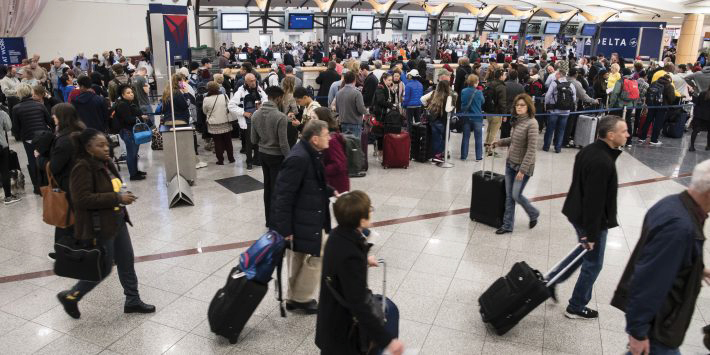265
Next Steps |Simulation Improvements
264
Next Steps |Simulation Improvements
A common approach to this within UE4 is to build prototypes in blueprint first and then move some or all of the functionalities to C++ once a “refractor point” is reached in which the base functionalities are proven and it becomes favorable to solidify the code for other people to use.[2] While this translation may take significantly longer than prototyping with blueprints, the increased performance will allow the simulation of increasingly bigger crowds, which can expand the range of applications of this tool depending on the architectural project.
With our current hardware and setup from Part 3, we have a limitation of around 150 people before the system begins to slow down substantially. Therefore, by optimizing the logic, it may be possible to increase this limitation and increase the range of this application from simulating smaller spaces such as galleries and installations to larger spaces such as train stations and malls. In doing so, it also becomes possible to utilize more detailed agent Skeletal Mesh assets to portray a more realistic variance within the crowd.
Accuracy: Additional Simulation Model Considerations
As already mentioned in Chapter 2.2: Establishing Model Methodology, additional variables can be introduced beyond the concept of personal space to introduce increased complexity to these agents. For example, variables can be created for each agent that states his or her energy, hunger, interest, comfort, memory, emotion, and task list. This produces a pseudo-personality for each agent, where their task may be altered based on their current physical and mental state. An agent that does not have enough energy may be too tired and will try to seek seating, whereas an agent who has achieved his or her goal within the space may no longer have any interest and choose to seek an exit. These can then be mapped during the simulation to visualize areas where people may become stressed, hungry, tired, happy, etc. Beyond this, additional parameters can also be considered from higher complexity models (also mentioned in Chapter 2.2) such as HiDAC, where factors such as pushing, falling and panic behaviors can be introduced. This new simulation model can then be fine tuned further by doing a series of real world crowd studies in different locations, which can introduce other factors to influence crowd movements such as geography, culture, average height, population age, etc. The foundational framework we developed throughout this thesis then allows us to slowly build upon it by adding these features, allowing the simulation model to become increasingly capable and accurate over time.
2 “Balancing Blueprint and C++,” Unreal Engine Documentation, accessed October 18, 2019, https://docs.unrealengine.com/en-US/Resources/SampleGames/ARPG/BalancingBlueprintAndCPP/index.html.
Utility: Additional features for the simulation tool
These improvements in the simulation model can also allow the implementation of additional features within the simulation tool—many of which were already briefly mentioned in Chapter 3.6: Application Methodology—which can include additional ways to visualize solar and thermal comfort, occupancy responses and reactions, as well as the ability to layer different types of agent trails depending on the persona, typology and groupset of the existing occupants. We can also recreate more accurate and additional scenarios to offer unique insight for architects during design. Beyond just evacuation we can simulate events such as holiday openings, conference lectures, and performances, as well as simulate more specific spaces that may require additional considerations such as checking into airports, hospitals, event gatherings, and so on. (Fig. 5.1.2) These features further contribute to the utility of this tool as an analytical and visualization tool for not only interactive dynamic spaces, but also occupied static spaces.

An airport is one example of a dynamic space that requires multiple layers of queuing, and many groupings of occupants
By John Amis, from Don Schanche Jr., “Airlines Struggle to Get Back on Schedule after Atlanta Fire,” December 18, 2017, FWBP, accessed January 1, 2020, http://www.fortworthbusiness.com/news/airlines-struggle-to-get-back-on-schedule-after-atlanta-fire/article_c1ce0496-e41b-11e7-8980-5b5f5acbd106.html.